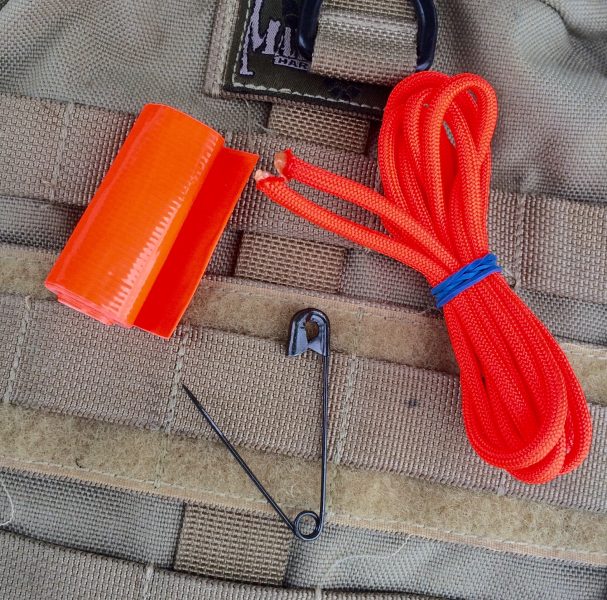[memb_include_partial id=15899]
Not every problem you encounter in the field or woods is a matter of life and death. Some issues are simply annoying and bothersome.
Take, for instance, the broken shoe or boot lace. A broken lace in your boot is not going to kill you, but if you are hiking and relying on your feet for transportation this can hinder your ability to move about as required.
There are many other equipment and gear issues that can hamper your journey and make life more difficult than it needs to be. Some classic examples are; broken or missing zipper pulls, broken zippers, broken straps and buckles on bags and packs, lost buttons on clothing, lost screws in the arms of eyeglasses, and snags or tears in rain gear or tent walls just to name a few.
Learn How to Get the Most out of 50 Rounds of Ammo with Our >> One Box Workout™ Report
Field Craft and Repairs
I learned a bit about field craft from the campouts I went on when I was in the Young Marines during my Junior High days. However, my primary practical experience came from being an Infantryman with the United States Marine Corps and spending time in the jungle, desert, woods, and mountains.
One of the first things I learned as a grunt was that no one cares about your comfort but you. In the field, a broken boot lace is your problem. Ditto for pack straps, snaps, and buckles. You learn to fix problems yourself and move on. The entire unit is not going to press pause on the mission because you have an equipment issue.
During my time in the USMC I learned the value of parachute cord. Back then we did not have access to 100 different colors of paracord. Ours was simply light green with black flecks in it. Experienced field grunts all replaced the standard laces in our jungle boots with lengths of paracord. We also left several extra feet of cord on our boots and wrapped it around our legs. That was where we stored our extra cord; around our boot tops. In addition to obvious chores, Paracord or 550 cord can be field-stripped so you can use the center core of thinner material as you would string or twine.
Also, before the era of pink, purple, and zebra-striped duct tape, we had something called “100 mile an hour” tape. Essentially, these were 50 foot rolls of olive drab green fiber-lined adhesive. The supply and transport guys had the big rolls and we grunts would cut off three to five feet, roll it up as a mini-roll, and stash it in our packs for field repairs.
In addition to being great for simple repairs (replacing lost screw in eyeglasses) a safety pin is invaluable for removing splinters. No one wants to be in the field with a wood splinter in their hand or fingers. A safety pin can also be used to replace the missing zipper pull we mentioned earlier.
When it comes to field craft and making impromptu repairs, there are three very simple but endlessly valuable items that should be in everyone’s kit. These would be 550/Paracord, a Mini-Roll of duct tape, and the ubiquitous Safety Pin. Don’t step off the blacktop without them.
Recommended Wilderness Survival Items:
- 3 Ft Roll Orange Duct Tape, 5 Ft length of Orange 550 Cord
- Wilderness Survival PLS Kit
Professor Paul Markel
Latest posts by Professor Paul Markel (see all)
- Tactical Rifle Tips: Transition Drills - January 5th, 2024
- 40/20/25 Shooting Drill - October 29th, 2023
- Working With Your Body Armor - October 3rd, 2023
- Hi-Point YC9: Yeet Cannon - August 14th, 2023
- Texas Hog Hunting: Day or Night w/ One Rifle - July 25th, 2023

Recent Comments